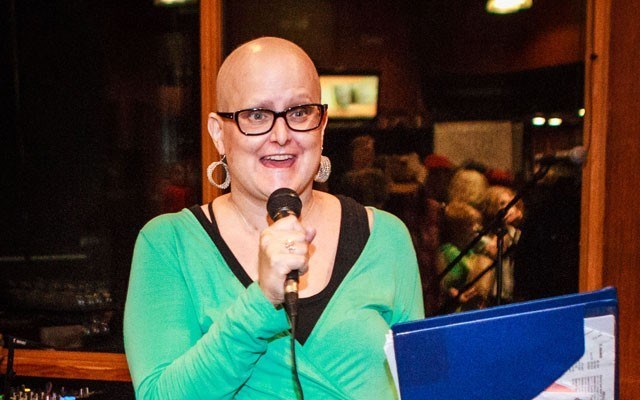A cancer diagnosis comes with obvious physical health impacts. But, quite often, it’s also the invisible effects on one’s mental and emotional well-being that can suck patients into a vortex of hopelessness and inactivity.
“We know that rates of anxiety and depression can go up following a cancer diagnosis, and exercise is one aspect of that treatment path that you have more control over,” explained Stephen List, personal trainer at Whistler’s Meadow Park Sports Centre (MPSC). “They have a little bit more ownership over their situation because they can do this exercise.”
List would know. A qualified cancer exercise specialist with a master’s in health and exercise science, List is the lead instructor for CanActive, a local fitness program at the MPSC designed for people living with cancer, whether they are actively in treatment or not.
Patricia Stoop first captured the hearts of Whistlerites when the community rallied to raise the necessary funds to cover a pricey new cancer drug called Perjeta. The drug eventually came with debilitating side effects, forcing Stoop to get around in a wheelchair and eat from a blender. (She has since gone off the drug, and stopped cancer treatment entirely last September when it began to make her ill again. She began CanActive the following month.)
Today, Stoop is bench-pressing, deadlifting and hiking on a regular basis, mostly thanks to List and his fitness program.
“What happened in the summer of last year, after working so hard to get over the adverse effects of my treatment, I started to get those same symptoms from before again,” she said. “I told myself there was no way I was going through this again, and I need to prevent it from happening.”
Stoop learned of CanActive through a friend and fellow cancer patient, and now hits the gym four times a week. Like List’s other clients, Stoop’s regimen has been specifically tailored to her cardio and strength capabilities—not to mention her own personal goals—and has been developed in conjunction with her physician and other medical professionals.
“He’s very client-centred. One of my goals was to put my paddleboard on top of the car, and he came up with the exercises to do that. Or I want to be able to go hiking, then he’ll say we’re going to work on this quad or glute exercise,” said Stoop, who recently went skiing for the first time in 12 years. “It’s a meaningful task to do and gives me a sense of purpose in that I can maybe do things I used to not be able to.”
Nigel Woods, who in 2018 was diagnosed with prostate cancer, has worked with List for more than a year, working out three times a week, along with his other daily activities. Some of the major side effects of his treatment are chronic fatigue and mental fog, as well as the long-term loss of both muscle mass and bone density.
“You wake up in the morning and you go, ‘Crap, this feels terrible,’ but the endorphins created by the program really beat it back so that I have, more or less, a normal life,” Woods said. “Without a doubt, it’s a huge benefit to me physically, and then following up from that, mentally as well. I feel more alert. It’s a great benefit. It’s huge.”
List is clear his program is not a cure, but a complement to a patient’s existing treatment plan.
“It’s really positive for people to have this opportunity that they know is beneficial, and when done correctly, can have this really positive effect,” he said. ”It might improve the quality of their life, and to an extent, may improve the duration of their life.”
To others in the Sea to Sky living with cancer who might be considering the program, Woods was adamant: now’s the time.
“They shouldn’t wait til tomorrow,” he said. “They should just get at it, because it will be a game-changer.”
To inquire about the CanActive program, email List at [email protected].
April is Cancer Awareness Month in Canada. Learn more at bccancerfoundation.com.



